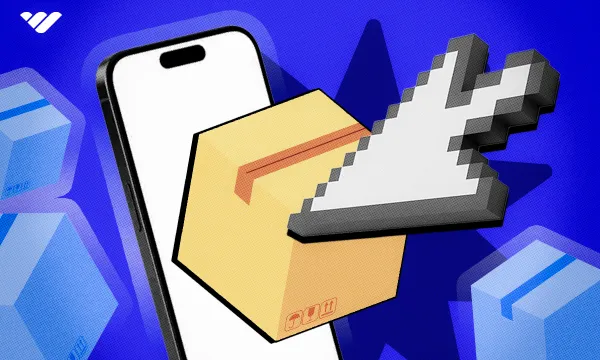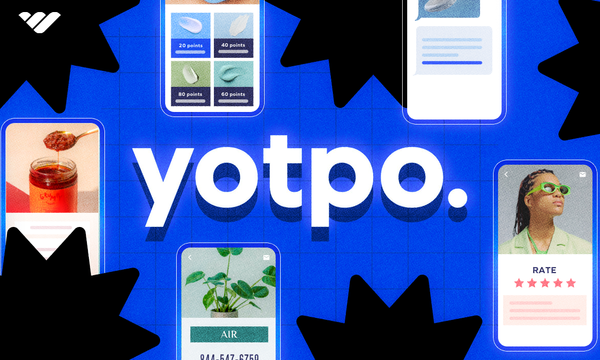Among the most profitable and desirable business models, both digital products and subscriptions reign supreme–so why not target both by selling a digital subscription online?
Any driven entrepreneur should consider joining the group of companies that are selling various subscriptions online, and it’s never too late to do so.
Here’s our full guide on how you can get a piece of the multi-billion dollar online subscription business pie. First, we will look at why you should be selling subscriptions online, before sharing a run down on the different types of subscriptions you can sell. Next, we share a step-by-step guide complete with proven advice on how and where to effectively start and scale your online subscription business to a livable income. Let's get started!
Why You Should Sell Subscriptions Online
If you need more motivation to launch a subscription business then you just need to look at the stats: a growing number of consumers are choosing subscriptions, with a projected size of the global ecommerce subscription market estimated to reach over $900 billion in 2026. This is an increase of over 4x of the current market which sits around $200 billion.
There are several benefits to selling an online subscription, particularly digital products. Let's take a look at why so many entrepreneurs are turning to selling online subscriptions.
Subscriptions are a recurring revenue business model
Having a business that generates recurring revenue is in some sense the holy grail in the entrepreneurial realm. Many well-known multi-billion dollar, publicly traded companies incorporate subscriptions in their business: Netflix and Amazon are prime examples.
The same principles as to why these companies were able to grow to their current heights can still be used by smaller solopreneurs who want to use the same business model for their own subscription business.
Subscription businesses are highly scalable and profitable
Traditional brick-and-mortar businesses will have the constraints of physical space in addition to staffing which can limit the ability to scale. Scaling a traditional business means incurring significant expenses and complications - which can sometimes render the business no longer profitable.
On the other hand, with online subscriptions, selling more of the product requires little to no more fulfillment or staffing, so it is possible to 10x the revenue while keeping the same team and process in this realm.
Subscription business models are attractive to investors
Because of the inherent potential for increased profitability and scale, investors prefer to back companies that incorporate a subscription model. As a result, the valuation for companies with a subscription, particularly SaaS businesses, is on the higher end.
Subscriptions foster consumer convenience and loyalty
If your offering is good and is constantly updated as needed, you will enjoy the mutual benefit of consumer loyalty. For the customer, this means not having to remember to pay every month. For you, that means collecting money on a consistent basis. The convenience that comes with this loyalty is mutually beneficial as it affects both your bottom line and the customer’s satisfaction.
Subscription models generate actionable insights from customer data
Once you have established history and a decent level of revenue, you will have valuable customer data that will allow you to track metrics that you can use to make profitable decisions for your business.
Examples of these actionable insights include Annual Recurring Revenue (ARR), Monthly Recurring Revenue (MRR), and various product adoption metrics.

Different Types of Subscriptions That You Can Sell Online
In order to get customers for your subscription business, you need to have a broad awareness of the different types of subscriptions that you can sell. From there, you will be able to pick the subscription product that is most aligned with your knowledge and expertise. Here are the main categories of online subscriptions. If you’re just starting out, pick and choose which one is best for you once you’ve reviewed them.
Physical Products
Even though the entrepreneurial world is trending heavily toward digital products, a market will always exist for products that people like to touch and feel. Examples of physical product subscriptions include health and wellness boxes, supplements, and fashion accessories. Consumables that are meant to be taken on a regular basis have the potential for a low churn rate as customers often incorporate these into their regular routine after having adopted the product and been satisfied with it in the first month.
SaaS
It is only fairly recently that creating a software-as-a-service (SaaS) as a solopreneur or with a small team became viable in terms of technology and consumer demand, but today many entrepreneurs have launched SaaS businesses to comfortable levels.
Although there will be some barriers to entry - particularly for those who aren’t technically inclined- it is for this reason that you can also establish a solid advantage if you happen to be someone who has a talent for building software that consumers love to use. Once you understand the market you are dealing in and gain initial traction, you can profitably scale with potentially low overhead and high-profit margins.
Private Communities
One of the fastest-growing and most profitable business models for online subscriptions involves selling a private community. As consumers are trending more towards tailored results with hands-on assistance, particularly with digital products, the market for private communities led by those with specific niche expertise is greater than ever. Most of these private communities are hosted on top of existing third-party platforms which makes it incredibly fast and convenient to launch one as it eliminates the investment of time and money that it would take to build and maintain your own.
A growing number of relatively normal individuals have launched profitable private communities that have become a primary source of income. It’s easier to do this now more than ever, especially with platforms like Whop that make it easy to launch and manage a private community on multiple platforms such as Discord or Telegram with little to no technical knowledge.
Online Courses
Although most digital products including online courses are often one-time purchases, some entrepreneurs are shifting towards a subscription-based business model to sell their online courses due to all of their previously mentioned benefits.
Even if you don’t think you are fully qualified to launch an online course, it’s a good idea to run a personal analysis of your unique skill sets and see if there is a demand in the market for you to launch a product within your realm of expertise. You might be surprised to learn that strangers are willing to pay you for your knowledge in the form of a course, but considering the array of courses of varying categories and quality that people buy every day, if you frame your knowledge and market yourself correctly, you can find customers.

How to Sell Online Subscriptions as a Beginner in 6 Steps
Now that we have run through some ideas for online subscription businesses, let's look at how to get the ball rolling and set up your business. Taking on the task of creating an online subscription business can be daunting, as it requires a number of steps that must be carried out methodically in order to succeed.
We have broken it down into a quick step-by-step guide on how to launch your online subscription business - even if it’s your first entrepreneurial venture.
Step One: Choose the type of online subscription
The first and most important part of launching your online subscription business is picking which one is most aligned with your skills and interests. Take some time to pick out which is best for you, and go through personal assessments that will help you settle on the type of online subscription that is best for you.
Step Two: Make a business plan
Once you’ve settled on which type of online subscription you are going to sell, structure a business plan including a realistic timeframe based on your current schedule and commitments so that you will carry it out. You can find templates for business plans online that you can fill out.
If you are struggling with filling out different parts of the business plan, that could be a sign that you might have to reassess the initial idea you had in mind or the type of online subscription you thought you would sell in the first place.
Step Three: Establish a solid brand name, identity, and mission statement
As part of your business plan, you will likely have made a mission statement and picked a brand name. Before you go live though, ensure that your brand name has an identity that is aligned with your mission statement so that your ideal customer will resonate and feel consistency with all aspects of your brand identity and mission.
Having solid branding will set your company apart from others that might be in your niche, so the more genuine you are, the more likely you are to stand out and gain loyal customers who are happy to pay you on a recurring basis. In terms of your logo, there is no need to overthink it, at the minimum it should simply be legible, memorable, and a good representation of your brand.
Step Four: Create your online presence
Now that you’ve settled on your brand identity and business plan, you’re ready to go live online. Don’t overthink this part, as you can always make tweaks in the future, and it’s better to just launch your brand online so that you can make tweaks later. The three steps for making your online presence are as follows:
Make a website
The first step for creating your online presence for your subscription business is to make a website. Depending on your business model and the platform you’re selling with, it can simply be a landing page or it can also include a blog and a store. Many site builders make it easy for beginners who have no coding experience to make a clean website–all you’ll need to do is drop in your logos and mission statement.
Choose a platform to sell on
While a selling platform can include a website to act as the main presence of your brand, sometimes it doesn’t. What is most important with your selling platform is that it fulfills its function well, and in this case, you’ll want a platform that is specialized for selling an online subscription.
Launch your social media presence
Before worrying too much about your social media promotion strategy, you should simply secure the handles on all relevant platforms that you would like to have represent your brand. Two or three, for example, an Instagram, Facebook page, and X (Twitter), should be enough. Be sure to link your website in the profiles of all these pages, and have your site link back to all of your social media as well.
Step Five: Price your subscription correctly
The price point you choose can make or break your business for a number of reasons: pricing too high will negatively affect conversion rate, and pricing too low can impact the profitability and overall personal viability of your business. Be sure to pick a price that is profitably high yet within the market rate of similar products in your niche.
Step Six: Establish and grow your social media presence
Like it or not, having a social media presence that is above a certain threshold in terms of followers and engagement can greatly affect your conversion rate and perceived authority.

What's Next? Starting and Scaling Your Online Subscription Business
Once your business is established, it's time to start growing. Starting a business for the sake of it and starting with the intent of scaling are two totally different things. Whether you have green lights with initial traction or if you have big dreams for your online subscription, you will want to have the following strategies in mind if you want to effectively scale your business in as short a timeframe as possible.
List your subscription for sale on a platform with a public marketplace
Getting the exposure to gain your first customers is arguably the hardest part of launching an online subscription business. By utilizing a platform that has a public marketplace, you will gain an additional organic marketing channel that will potentially put you in front of new customers. Whop’s homepage showcases new and top-selling digital products, which are primarily subscriptions. Any new seller can potentially show up on Whop’s page for discovery.
Lay the groundwork for a comprehensive marketing strategy
Marketing plays an important role not only for the initial exposure but for scaling your business to comfortable levels. In order to make the best use of it, you’ll have to utilize a comprehensive marketing strategy, meaning that you include various marketing channels, tools and different approaches that all work together in tandem.
For example, using organic content marketing in addition to email marketing, while simultaneously creating assets based on customer data that is gathered for both brand awareness and product promotion, is a comprehensive marketing strategy that many brands use to scale to significant levels.
It will take some time to settle on a strategy that is best for your business model, but once you have laid the groundwork, you’ll have a great base to scale from.
Execute and continually tweak and improve the business and marketing plan
A great idea is nothing without proper execution, so once you have the business plan and the groundwork for comprehensive marketing, systematically carry out your plans using to-do lists, milestones, KPIs, and the correct people to play their respective roles.
As your numbers grow, your strategies often change as what worked before at lower levels may stop working or work differently as you scale, so continue to review what is effective and what isn’t and make tweaks, changing focus and effort accordingly.
Track relevant metrics as you scale
After a year or so of generating revenue at a decent level, you will have valuable data regarding customer spending and behavior. Be sure that as early as possible you are tracking data not only from customers but also from web visitors, and create reports.
Relevant metrics to track include ARR, MRR and Churn Rate.
Especially if you have a SaaS business, you’ll want to track metrics that include engagement, retention, and acquisition.
Continue to build a team and processes to carry out your goals
Although solopreneurs can take subscription businesses to significant levels, more often than not, there is a team behind successful businesses that operate at scale. Your team may start small, perhaps with yourself and a business partner and some virtual assistants, and you will likely be wearing many hats by taking on different aspects of operating your business, as you should in the beginning so that you can learn how and where to delegate as you grow.
Be sure to recruit a talented team that believes in your vision, and don’t be afraid to delegate work and trust that your staff can do a good job carrying out your vision and achieve goals so that you can continue to work on your business without being stuck inside day-to-day operations that will wear you down as you scale.
Tips for Scaling your Online Subscription Business
To summarize and add to the aforementioned strategies, here is a quick list of tips that you can use to scale your online subscription business:
Give your online subscription business a competitive advantage
If you have a good idea, it’s highly unlikely that you are alone in offering it or something similar to the world. Keep in mind that creating a competitive advantage in terms of features, branding, and mission, and functionality is better than offering a lower price.
Gather data and act on the correct metrics
Remember to gather as much data as possible from the beginning from relevant sources using the correct metrics so that you can gather insights that you can act on. Don’t get too overwhelmed by different data points, so, especially in the beginning, simply track the few that have the greatest impact on your bottom line, such as conversion rate and churn rate.
Execute and maintain a competitive comprehensive marketing strategy
Utilizing a fully comprehensive marketing strategy that incorporates a variety of methods including organic and paid marketing will help you maximize your reach and acquire as many customers as possible. This is especially important early on so that you can gain a base level of traction that will prove your concept and motivate you and your team to continue.
Focus on customer loyalty and word-of-mouth
Especially with a business that offers a recurring subscription as its main product, you will want to foster customer loyalty by giving the customer exactly what they want and more. An excellent product as opposed to a product that is simply good enough will organically gain new customers with word of mouth. You can incentivize your customers to recruit new customers by offering an affiliate program for those who want to promote your product.
Build and maintain a healthy team
If you have big visions for your business, you’ll want to build a team that is in it for the long run. Be sure to thoroughly vouch for everyone who is joining you, and make sure they are capable and motivated to grow your business with you as laid out by its mission statement.

Examples of Successful Online Subscription Businesses
To gain some inspiration, here are some examples of successful online subscription businesses that were started by individuals and grew to livable income in six or even multiple-seven figures.
Nomadlist
Pieter Levels, entrepreneur, digital nomad and founder of Nomadlist, has bootstrapped his company as a one-man team to impressive seven-figure levels. Nomadlist offers insights into locations for digital nomads, has a private community, and additionally generates revenue from sponsorship deals. The bulk of its revenue comes from a members-only Slack group.
Its business model is simple and requires little maintenance and overhead as much of the data is user-submitted. Levels simply organizes and displays it on his website which remains fairly lightweight. Nomadlist has grown significantly during the pandemic and is expected to continue to grow without much need for a larger team.
Jungle Scout
Sometimes scratching your own itch is the best way to start a thriving business, and this is the case with Greg Mercer, founder of Jungle Scout, which now boasts a team of 200+ and eight figures in annual revenue just a few years after its inception.
Mercer was an Amazon seller who wanted to find more sales data for competing products, and he launched a Chrome extension which eventually turned into a whole suite of data and analytics tools called Jungle Scout.
The company now helps over 500,000 stores manage tens of billions in revenue, all of whom happily pay a monthly fee to use the SaaS tools that Jungle Scout has to offer.
Discord Communities on Whop
A fast-growing and large array of communities started by individuals who are experts in their respective realms have launched on Whop, from reselling to stock trading and everything in between in the money-making world.
Although Discord exists as a standalone platform with great functionality, it lacks a built-in subscription and payment management system for those who are hosting private communities on it. Whop makes launching subscriptions for Discord communities simple with seamless integration, thanks to its robust and easy-to-use API, so that you can take your online subscription business from idea to recurring revenue ASAP.
Where to Sell Online Subscriptions
Are you ready to start selling online subscriptions? Well, it is easier than ever today to launch an online subscription business. There are so many platforms that you can use for your online subscription business - for a full list, check out our article on where to sell digital products.
However, you don't want to choose the first solution that you come across. The platform you choose to sell online subscriptions on should have the following characteristics or features:
- Easy to navigate for the customer to make purchases and access memberships
- Intuitive dashboard which includes relevant metrics and extensive reports
- Wide variety of payment options for the customer
- Various payout methods and timeframes for the business owner
- Seamless integration with any third-party platforms such as Discord for private membership management and authorizations
- Ability to handle customers and payments at scale
Although there are many platforms where you can sell online subscriptions, Whop stands out as a key contender. Whop has all of the above qualities and more! What began as a marketplace for buying and selling memberships is now a thriving hub for digital products, from online courses to SaaS, and of course - memberships.
Whop is catered towards the user, so setting up your store and putting your digital product live takes less than 10 minutes. Plus, you also gain access to a robust seller dashboard - home to metrics, tools, and the ability to manage your subscriber's memberships. There is also an easy-to-use API, so if you have an existing site but want to use Whop's payment gateway and subscription management system, you can integrate the API to your own site! It's easy to see why so many entrepreneurs choose to work with Whop as their preferred platform.
Read on to discover how you can get started as a seller today.
Selling subscriptions online with Whop (Step-by-step guide)
Using Whop to launch your online subscription for a digital product, whether it’s a SaaS or a private community, is incredibly simple and the initial setup takes mere minutes. Here is a quick guide on how you can get started selling subscriptions online with Whop today.
Step One- Pick your store name and branding
One of the first steps that you’ll encounter when making a store on Whop is choosing the store name and associated branding with logos. If you already have your logo, then use that here.
Step Two- Select the type of product you will be selling
Simply select the product you’ll be selling, whether it’s Discord access, Telegram access, SaaS, or an online course that will be paid on a subscription basis. Whop supports all of these products and more, and makes it simple to integrate when necessary.
Step Three- Integrate with any third-party platforms using Whop’s API
If you’re using a third-party platform such as Discord and you’d like to grant access to private channels only for paying members then you’re in luck, because this is exactly what Whop was built for. Whop’s powerful API easily integrates with Discord, Telegram, and more and you will be able to create authorization keys that will automatically be granted to paying members and taken away from those who are not paying. Plus, with Whop you can manage and view all subscribers within a dashboard. You can read more about Whop’s software and API here.
Step Four- Launch your store on the marketplace
Now that your business is customer-ready, you are ready to launch it. Simply publish your store within your Whop seller dashboard and you will be live on the marketplace for anyone to find.
Step Five- Use the Dashboard to track metrics and generate reports
Whop has a powerful dashboard that will display valuable metrics such as Average Order Value, Churn Rate, MRR, and more in an easy-to-view interface. In addition to having clear reports with actionable data, you’ll be able to view and manage payouts so that you get paid when and how you want. Remember to aim high, and watch your numbers grow!
Start Selling Today with Whop!
If you’re ready to launch your online subscription business on Whop, then you can join the group of internet entrepreneurs who are playing active roles in the booming economy of digital products.
👉 It takes less than 10 minutes to build your store - so sign up to Whop today and begin your online subscription sales journey!
FAQs
How do I price my online subscription?
Pricing your online subscription should largely be based on what the market rate for similar products is. Rather than trying to undercut the competition in price, it is often better to price the same or even slightly more and simply offer more value and better features so that you stand out as a premium offering.
How do I sell subscriptions if I have an existing business?
If you have an existing business but have not yet incorporated a subscription model, think of how you can turn your one-time offering into a recurring product. Can you continually upgrade whatever you’re selling? Is there a constant stream of questions from customers that, instead of answering in the form of individual responses or coaching sessions, can be turned into a paid private community? Get creative and also ask your customers what they want so you can figure out a way to give a recurring offering that makes sense.
What’s the best way to market my subscription?
While the specifics of marketing a subscription will vary on your product type and niche, you will want to create a comprehensive marketing strategy that will allow you to create and grow brand awareness in addition to driving sales. To do this, you will generally have to include content marketing along with email marketing and advertising.
What does churn rate mean in a subscription business?
One of the most important metrics to track in a subscription business is the churn rate, which is the number of customers that you lose over a certain period of time, for example, on a monthly basis. It is often calculated and reported as a percentage and is one of the biggest factors in determining product satisfaction and the sustainability of your business. You can read more about churn rate here.





![Amazon Trends Report [2024] Top Selling Product Categories](/blog/content/images/size/w600/2024/10/X-Amazon-Ecommerce-Trends--2024-.webp)